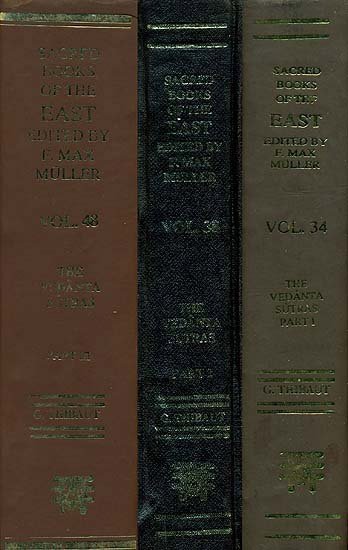Brahma Sutras (Ramanuja)
by George Thibaut | 1904 | 275,953 words | ISBN-10: 8120801350 | ISBN-13: 9788120801356
The English translation of the Brahma Sutras (also, Vedanta Sutras) with commentary by Ramanuja (known as the Sri Bhasya). The Brahmasutra expounds the essential philosophy of the Upanishads which, primarily revolving around the knowledge of Brahman and Atman, represents the foundation of Vedanta. Ramanjua’s interpretation of these sutras from a V...
Sutra 4.2.17
17. Following the rays.
Scripture teaches that the soul of him who knows, after having passed forth from the heart by way of the hundred and first artery, follows the rays of the sun and thus reaches the disc of the sun: 'when he departs from this body he goes upwards by these rays only' (eva) (Ch. Up. VIII, 6, 5). The idea here suggests itself that the going of the soul cannot be exclusively bound' to those rays, since when a man dies during the night it cannot follow tae rays of the sun. Hence the text quoted above can refer only to a part of the actual cases.—This view the Sūtra rejects. The soul moves upwards, following the rays only; the text expressly asserting this by means of the 'eva'—which would be out of place were there any alternative. Nor is there any strength in the argument that the soul of him who dies at night cannot follow the rays as there are none. For in summer the experience of heat at night-time shows that there are present rays then also; while in winter, as generally in bad weather, that heat is overpowered by cold and hence is not perceived (although actually present). Scripture moreover states that the arteries and rays are at all times mutually connected: 'As a very long highway goes to two villages, so the rays of the sun go to both worlds, to this one and to the other. They stretch themselves forth from the sun and enter into these arteries'; they stretch themselves forth from these arteries and enter into yonder sun' (Ch. Up. VIII, 6, 2).—As thus there are rays at night also, the souls of those who know reach Brahman by way of the rays only.—Here terminates the adhikaraṇa of 'the following up the rays.'
